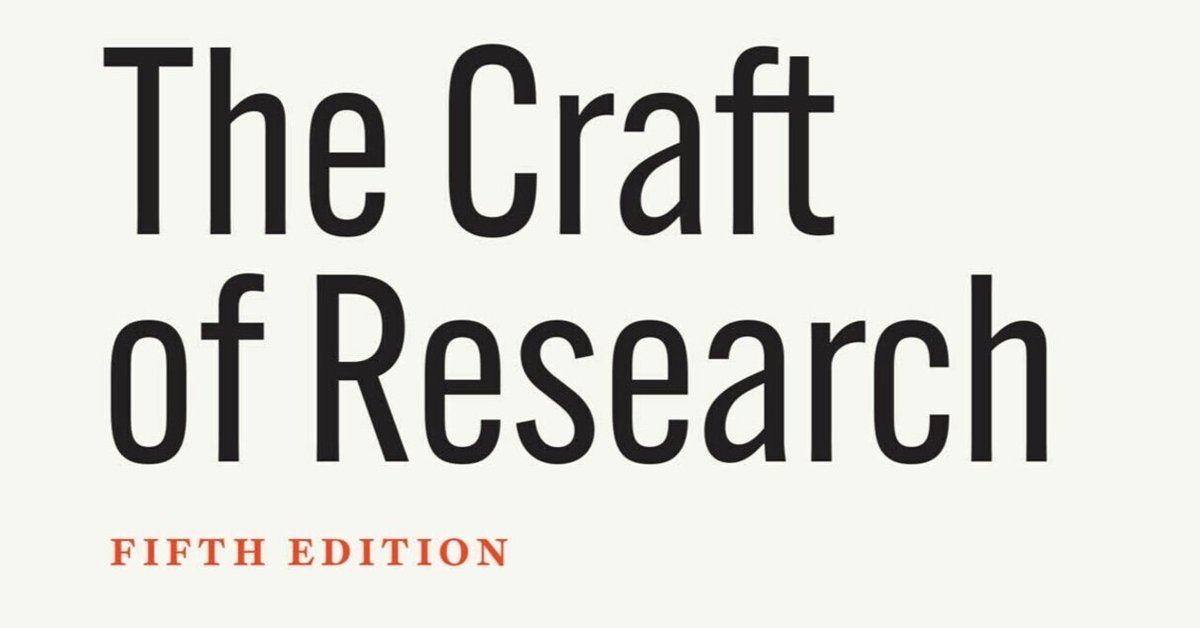
W.C.ブース他著『リサーチの技法』第5版
NOSK会員の方は、ホームページからのお取り寄せ依頼で
特別割引40%OFF適用!

版を重ねたミリオンセラー
1995年に初版が発行され、4版は8年前の2016年に刊行。通算で100万部以上を売り上げた、まさにミリオンセラー。
アメリカでは高校生や学部生、院生、企業や政府機関の研究者まで、あらゆるレベルの学生・研究者から支持されてきた、定評あるテキストブックです。
おススメの理由
研究に携わる人が誰もが一度は抱く疑問である、「どうやって研究したらいいのか」という方法論を教えてくれるテキストだからです!
自分の興味をどう研究やレポートの課題に据えるか
自らの主張をどうまとめ議論として構築するか
論文の構成をどう作るか
文章をどう修正すべきか…
ということを教えてくれます。
新版の特徴
この新版では、研究プロセスへの定評あるアプローチや、一般的な構成、わかりやすい語り口はそのままに、今日における研究のさまざまな進め方や伝え方について、アップデートした情報を盛り込んでいます。
★研究が論文以外の成果物につながる可能性があること -あるいは成果物がまったくない場合もあること- を考慮し、論文発表だけでない、効果的なプレゼンの方法に関する新しい章を設けている。
★現在の学生や読者にアピールするさまざまな学術分野からの新しい事例を取り上げている。
★研究で使用される新しいテクノロジー、特に生成AIの適切な使用に関する基本的なガイドラインを提示している。
★倫理に関する章を増補し、研究者の研究コミュニティや一般聴衆に対するより広範な義務や、倫理的な研究実践に関する体系的な問題を取り上げている。
NOSK会員特価あり!ご注文は極東書店まで
当社スタッフも、院生時代にアメリカから来た先生のもと、本書(旧版)を使って授業を受けた経験がありました。
当時は「レポートや論文の書き方」についてはある程度習っていたものの、「研究そのもの」の方法については習ったことがありませんでした。
本書を用いた授業で、どう疑問を見つけ、そこから研究テーマに昇華し、自らの主張を練り、論文を執筆するかという研究の基礎が学べました。
授業自体はとても辛かったそうですが、なぜこれを学部時代にやらなかったのか…と思うほど、重要なことが学べる本だと思った、とのこと。
リサーチには必読のテキストとして、今回、NOSK会員の皆様には特別価格にてご提供いたします!
個人での自学自習から授業での購読、論文作成に欠かせないレファレンスブックとして図書館に。どうぞお買い求めください!

Table of Contents
Preface: The Aims of This Edition
Introduction: Your Research and Your Audience
I.1. What Is Research?
I.2. Connecting with Your Audience
I.3. Understanding Your Role
I.4. Imagining the Role of Your Audience
I.5. How to Use This Book
Quick Tip: A Checklist for Understanding Your Audience
Part I. Asking Questions, Seeking Answers
Prologue: Planning Your Project—An Overview
Quick Tip: Sustaining a Writing Project Alone and in Groups
1. From Topics to Questions
1.1. From an Interest to a Topic
1.2. From Focused Topic to Research Question
1.3. The Most Significant Question: So What?
Quick Tip: Finding Topics
2. From Questions to a Problem
2.1. Understanding Research Problems
2.2. Distinguishing “Pure” and “Applied” Research
2.3. Connecting Research to Practical Consequences
2.4. Finding a Good Research Problem
2.5. Learning to Work with Problems
Quick Tip: Making an Opportunity of Inexperience
Part II. Sources and Resources
Prologue: Sources and Authentic Research
3. Finding and Evaluating Sources
3.1. Understanding Three Types of Sources
3.2. Making the Most of the Library
3.3. Locating Sources Online
3.4. Evaluating Sources for Relevance and Reliability
3.5. Looking Beyond Predictable Sources
3.6. Using People to Further Your Research
Quick Tip: Using Generative Artificial Intelligence
4. Engaging Sources
4.1. Recording Complete Bibliographic Information
4.2. Engaging Sources Actively
4.3. Reading for a Problem
4.4. Reading for Arguments
4.5. Reading for Data and Support
4.6. Taking Notes Systematically
4.7. Annotating Your Sources
Quick Tip: Managing Moments of Uncertainty
Part III. Making Your Argument
Prologue: Assembling a Research Argument
5. Making Good Arguments: An Overview
5.1. Argument as Conversation
5.2. Assembling the Core of Your Argument
5.3. Explaining Your Reasoning with Warrants
5.4. Acknowledging and Responding to Anticipated Questions and Objections
5.5. Planning Your Research Argument
5.6. Creating Your Ethos
Quick Tip: A Common Mistake—Falling Back on What You Know
6. Making Claims
6.1. Determining the Kind of Claim You Should Make
6.2. Evaluating Your Claim
6.3. Qualifying Claims to Enhance Your Credibility
Quick Tip: Make Your Claim Contestable
7. Assembling Reasons and Evidence
7.1. Using Reasons to Plan Your Argument
7.2. Distinguishing Evidence from Reasons
7.3. Determining the Kind of Evidence You Need
7.4. Distinguishing Evidence from Reports of It
7.5. Evaluating Your Evidence
Quick Tip: Assess Your Evidence as You Gather It
8. Warrants
8.1. Warrants in Everyday Reasoning
8.2. Warrants in Research Arguments
8.3. Testing Warrants
8.4. Knowing When to State a Warrant
8.5. Using Warrants to Test Your Argument
8.6. Challenging Others’ Warrants
Quick Tip: Reasons, Evidence, and Warrants
9. Acknowledgments and Responses
9.1. Questions about Your Research Problem
9.2. Questions about the Soundness of Your Argument
9.3. Imagining Alternatives to Your Argument
9.4. Deciding What to Acknowledge
9.5. Framing Your Responses as Sub-arguments
9.6. The Vocabulary of Acknowledgment and Response
Quick Tip: Three Predictable Disagreements
Part IV. Delivering Your Argument
Prologue: Planning, Writing, and Thinking
10. Planning and Drafting
10.1. Why a Formal Paper?
10.2. Planning Your Paper
10.3. Avoiding Three Common but Flawed Patterns
10.4. Turning Your Plan into a Draft
Quick Tip: Managing Anxiety as a Writer
11. Revising and Organizing
11.1. Thinking Like a Reader
11.2. Revising Your Frame
11.3. Revising Your Argument
11.4. Revising Your Organization
11.5. Checking Your Paragraphs
11.6. Letting Your Draft Cool, Then Revisiting It
Quick Tip: Abstracts
12. Incorporating Sources
12.1. Summarizing, Paraphrasing, and Quoting
12.2. Creating a Fair Summary
12.3. Creating a Fair Paraphrase
12.4. Using Direct Quotations
12.5. Mixing Summary, Paraphrase, and Quotation
12.6. Showing Readers How Evidence Is Relevant
12.7. The Social Importance of Citing Sources
12.8. Four Common Citation Styles
12.9. Guarding against Inadvertent Plagiarism
Quick Tip: Indicating Citations in Your Paper
13. Communicating Evidence Visually
13.1. Choosing Visual or Verbal Representations
13.2. Choosing the Most Effective Graphic
13.3. Designing Tables, Charts, and Graphs
13.4. Specific Guidelines for Tables, Bar Charts, and Line Graphs
13.5. Representing Data Ethically
Quick Tip: Look for Opportunities to Include Visual Evidence
14. Introductions and Conclusions
14.1. The Common Structure of Introductions
14.2. Step 1: Stating a Context
14.3. Step 2: Stating Your Problem
14.4. Step 3: Stating Your Response
14.5. Setting the Right Pace
14.6. Finding Your First Few Words
14.7. Writing Your Conclusion
Quick Tip: Use Key Terms in Titles
15. Revising Style: Telling Your Story Clearly
15.1. Judging Style
15.2. The First Two Principles of Clear Writing
15.3. A Third Principle: Old before New
15.4. Choosing between the Active and Passive Voice
15.5. A Final Principle: Complexity Last
15.6. Editorial Polish
Quick Tip: The Quickest Revision Strategy
16. Research Presentations
16.1. Presenting to Auditors
16.2. Giving a Preliminary Presentation
16.3. Giving a Final Presentation
Quick Tip: Treat Your Presentation as a Performance
Part V. Some Last Considerations
17. The Ethics of Research
17.1. Ethical Obligation to Yourself
17.2. Ethical Obligation to Your Audience and Fellow Researchers
17.3. Research and Social Responsibility
17.4. A Final Thought
18. Advice for Teachers
18.1. The Risks of Imposing Formal Rules
18.2. On Assignment Scenarios: Creating a Ground for Curiosity
18.3. Recognizing and Tolerating the Inevitable Messiness of Learning
Our Debts
Appendix: A Brief Guide to Bibliographic and Other Resources
Index
〒101-0061
東京都千代田区神田三崎町2-7-10 帝都三崎町ビル
株式会社極東書店
*商品内容等につきましては極東書店までお問い合わせくださいませ。
